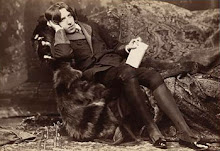
Book reference: Bram Stoker's Dracula, Mina and Jonathan are married by the Anglican wedding ceremony, Jonathan recovering from a brain fever, Mina ecstatic on her marriage, despite the circumstances ""Lucy, the time has come and gone. I feel very solemn, but very,very happy. Jonathan woke a little after the hour, and all was ready, and he sat up in bed, propped up with pillows. He answered his 'I will' firmly and strong. I could hardly speak. My heart was
so full that even those words seemed to choke me."
In Eastern Orthodoxy, marriage is treated as a Sacred Mystery (sacrament), and as an ordination. And, like all ordinations, it is considered to be a martyrdom, as each spouse learns to die to him- or herself for the sake of the other. Like all Mysteries, Orthodox marriage is more than just a celebration of something which already exists: it is the creation of something new, the imparting to the couple of the grace which transforms them from a 'couple' into husband and wife within the Body of Christ.
Unlike Western Christianity, Eastern Orthodox Churches do not consider the sacramental aspect of the marriage to be conferred by the couple themselves. Rather, the marriage is conferred by the action of the Holy Spirit acting through the priest. Furthermore (and again, unlike in the West), no one besides a bishop or priest—not even a deacon—may perform the Sacred Mystery.
The external sign of the marriage is not the exchange of rings (which takes place at the betrothal, not at the marriage); rather, it is the placing of wedding crowns upon the heads of the couple, and their sharing in a "Common Cup" of wine. For this reason, the Orthodox name for the Rite of Marriage is "Crowning". Among the Greeks, the crowns will often be garlands; among the Romanians the crowns will usually be of gold, with an icon of Christ on the groom's crown and the Theotokos (Virgin Mary) on the bride's crown.

These crowns may be joined together by a ribbon. The sharing of the Common Cup is reminiscent of Christ's first miracle at the Wedding at Canna of Galilee, and symbolizes the transformation of their union from a common marriage, as the world knows it, into a sacred union. The wedding is usually performed after the Divine Liturgy, at which the couple will have received Holy Communion. Like all Sacred Mysteries, the bride and the groom must go to Confession before receiving it.
Divorce is discouraged, but sometimes out of economic (mercy) a marriage may be dissolved if there is no hope whatever for a marriage to fulfill even a semblance of its intended sacramental character. A lay member may remarry, if they obtain the blessing of their bishop to do so. However, in such a case, a different ceremony, the Rite of Second Marriage, which is less joyful and more penitential, sober and somber is used. This rite is also much shorter than the full Crowning—and in fact, no crowns are used. A third marriage is very much discouraged. This form is used only when both members of the wedding couple have been previously married, so as not to punish the innocent one.

















6 comments:
very nice article..unfortunately in greece society marriage in churches are turned to be more and more few because today we have here many non religious marriage(in city's town hall)..many divorses too :S ..so it is obvious the relationship between the people are not as they was in the past...how about romania?
Read about the Greek wedding here;
http://www.yasou.org/church/wedding.htm
It is true....In Romania, as much as in many other countries, the marriage has become decadent but as well as many other things need changes probably the marriage has to build up a different relationship between their members.
I don’t believe the substance of marriage it will change ever (pair is and it will be forever the engine of life, the health of the spirit needs pair as a shape of being…), but the shape of it, for sure, has to do it….
Μερικές σκέψεις που έκανα διαβάζοντας τα βιβλία ΄΄Γράμματα στην Κατερίνα΄΄ του Charlie W. Shedd και το ΄΄Γάμος΄΄ του Παπα - Φιλόθεου Φάρου και του Παπα-Σταύρου Κοφινά Κάποιοι πιστεύουν ότι ο γάμος είναι ΄΄κρέμασμα΄΄, κάποιοι άλλοι πάλι πιστεύουν ότι είναι το ομορφότερο πράγμα που θα μπορούσε να τους συμβεί. Κατά τη γνώμη μου ο γάμος είναι κάτι το οποίο ονειρεύεται και επιθυμεί κάθε γυναίκα, ακόμα και εκείνες που λένε ότι δεν θα παντρευτούν πότε. Όταν δύο άνθρωποι αποφασίσουν να παντρευτούν αυτό σημαίνει ότι δεσμεύονται να είναι για πάντα μαζί. Πιστεύω ότι έτσι ολοκληρώνεται η σχέση των ανθρώπων. Είναι κάτι που θα ήθελα να ζήσω κι εγώ. Μαρία Βέργου, 16
I did some thinking while reading “Letters to Catherine” by Charie W. Shedd and “Marriage” by a greek priest. Some people believe that marriage is their ball and chain, others that it is a dream come true. I think that every woman secretly dreams of marrying, even the ones that deny it. Marriage is a life-long commitment and it fulfills the relationship between a man and a woman. I personally would like to see how that feels. Maria Vergou, 16
I am totally immersed myself in the excellent stuff.It is our great pleasure to share the wonderful blog with you. Best Regards!
Awesome post, although by the title of the blog I was expecting a little different, but I did enjoyed yours.
Post a Comment